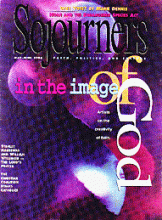After reading Eldin Villafañe's Seek the Peace of the City, while driving up 16th Street NW in Washington, D.C., I noticed at almost every glance a church, temple, or synagogue. I recalled Luke 19:40-41: "He answered, 'I tell you, if [my disciples] were silent, the stones would shout out.' As he came near and saw the city, he wept over it."
Villafañe has boldly challenged the church in general, and the inner-city church in particular, to return to the fundamentals of transforming the landscape into a "city that has foundations, whose architect and builder is God" (Hebrews 11:10). Seek the Peace of the City serves as a wake-up call to those of us who have fallen asleep at the helm of prophetic engagement with a ruthless society.
I was inspired by Villafañe's listening to the Proverbs writer's words, "Where there is no vision, the people perish" (Proverbs 29:18). I would suggest, however, that Villafañe not speak so gingerly with us, for vision and revelation do exist. The question is at our tent doors: Is the vision and revelation from God?
Perhaps some of us are giving clarity to another shepherd's voice, causing the vision and revelation to lack any real transformative power. Perhaps the vision is not to build fancier stones, which isolate and insulate us from our neighbors and their condition. Instead we should be building greater avenues of trust and understanding, as Villafañe discusses in the sixth chapter, "Hispanic and African-American Racial Reconciliation: A Latin Jazz Note."
As a Latino, Villafañe has captured the essence of a new exploration of liberation theology-the liberation of our souls. We should now begin to build upon Villafañe's "ministry of presence, the ministry of peace (Shalom) and the ministry of Prayer," in order to shape and mold our own particular context.
Villafañe testifies:
Read the Full Article
